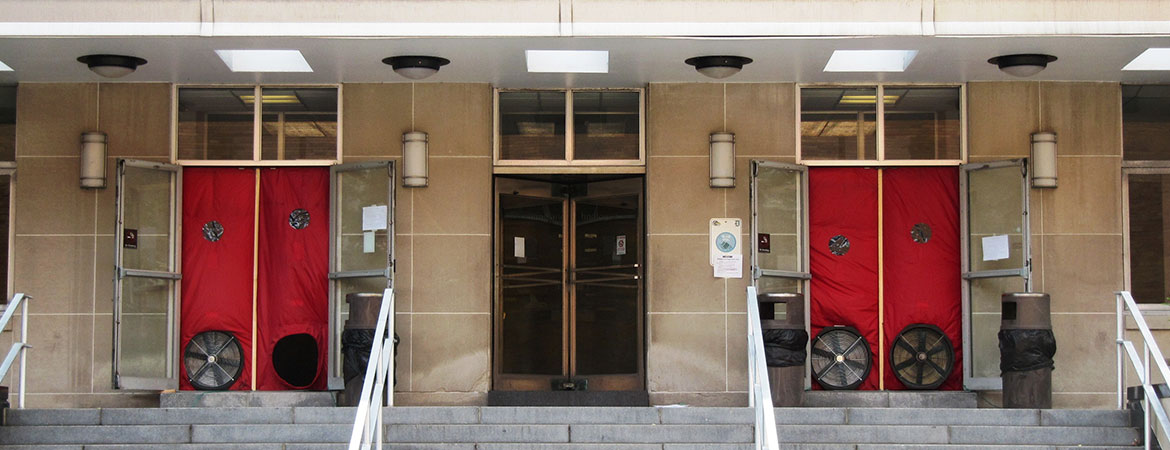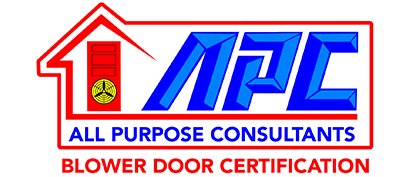

When and Why Blower Door Test
The blower door test is often required to determine if a home meets part of the criteria for energy efficiency or “green status” of many building certification programs. These third-party certification programs generally offer monetary incentives for building owners and/or the licensed building contractor of homes that meet or exceed program requirements. For example, the Weatherization Assistance Program (WAP) requires a blower door test to assess where air leakage is occurring before approving any upgrades to the home. Some utility companies offer incentives or rewards to builders and/or homeowners who test homes with the blower door test and install measures to reduce air leakage. (Keep in mind that the standard blower door test does not involve identifying where leaks occur, only quantifying the amount of leakage.)
A home buyer’s/owner’s incentive for having a blower door test done, in addition to reduce utility bills, may include mortgage inducements. If a home is reasonably air tight, the heating and cooling systems do not have to work as hard to maintain a comfortable indoor air temperature, and the utility bill will generally be lower than it would be if the home were “leaky”. If you’re thinking about purchasing a home, whether new or pre-owned, you may want to consider having a home energy rating done before you buy. The home energy rating will include a blower door test to identify building leakage problems. There has been a voluntary statewide energy-efficiency rating system for Florida homes since 1994 and unplanned air leakage is a major factor determining the overall home energy rating. More information about home energy ratings can be found in this fact sheet.
While there are many well-known sources of air leakage – the “usual suspects” – almost all buildings have unexpected air leakage sites called bypasses. These sources of leakage can be difficult to locate and correct without the use of the blower door test. See this guidebook, Thermal Enclosure System Rater Checklist, for information on thermal bypasses and this publication, Retrofit Techniques & Technologies: Air Sealing, for more information on air sealing.
There are a number of steps involved with a blower door test. First, a temporary frame is placed in an exterior door frame. This frame is generally covered with a piece of vinyl or canvas specifically made for blower door testing. Second, a fan (i.e., “blower”) is placed in the opening at the bottom of the temporary frame. Hence, the “blower door” test. As part of the test, the fan can either pressurize (force air into the house) or depressurize (force/pull air out of the house). Figure 1 shows how the setup appears from outside the home.
In addition, the blower door test uses a pressure gauge (manometer) that measures the fan pressure relative to the location from which air is entering the fan (Figure 2). This pressure is converted to air flow measurements as the air passes through the fan.
Generally, for “green” certifications requiring a blower door test, a RESNET Home Energy Rating System (HERS) Rater must conduct the test. ENERGY STAR Home program testing can only be conducted by RESNET HERS Raters who have taken and passed an ENERGY STAR certification class. To find a RESNET HERS Rater who can conduct a blower door test for “green certification” purposes, search this website.
For 5th Edition (2014) Florida Energy Conservation Code residential air leakage testing, per Section R402.4.1.2 of the code, where required by the code official, air leakage testing must be conducted by an approved third party. Per Chapter 2 of the same code, an approved third party means one who is approved by the code official. Requirements for air leakage testing in the Florida Building Code have been delayed for up to a year from the date of this publication (June 22, 2015). Consult your local Building Department for the status of the building air leakage testing requirements.
All Purpose Consultants is also an accredited HERS Provider qualified to inspect and test a home in order to evaluate each of the minimum rated features established by RESNET and prepare a comprehensive HERS rating according to Chapters One and Three of the RESNET Mortgage Industry National Home Energy Rating.
An individual who is certified by an accredited HERS Provider to inspect and test a home in order to evaluate each of the minimum rated features established by RESNET and prepare a comprehensive HERS rating according to Chapters One and Three of the RESNET Mortgage Industry National Home Energy Rating.
Contact Rich Avon, Owner of All Purpose Consultants today to schedule.


